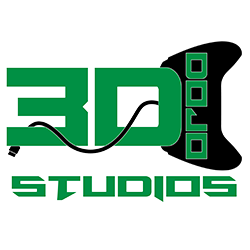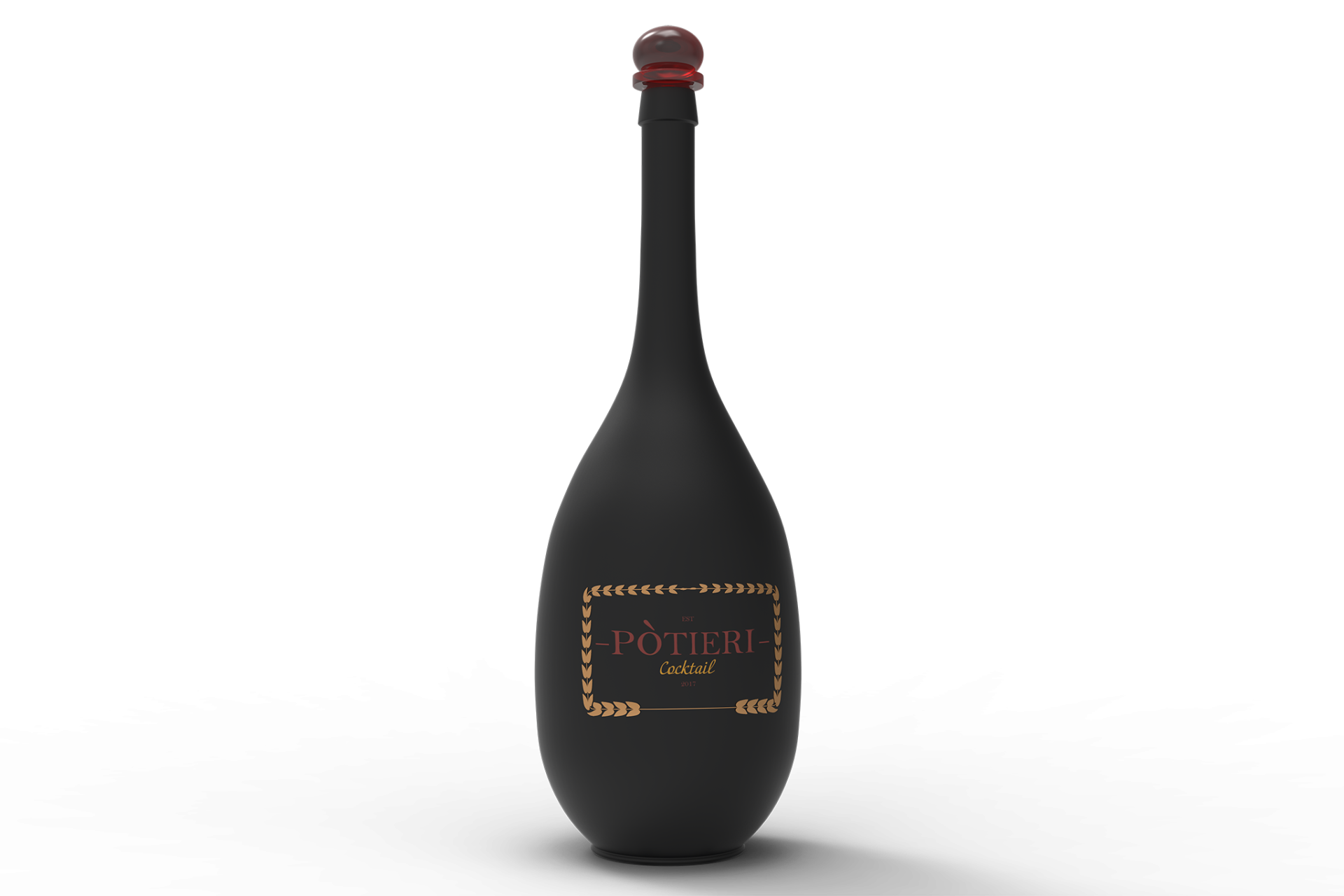
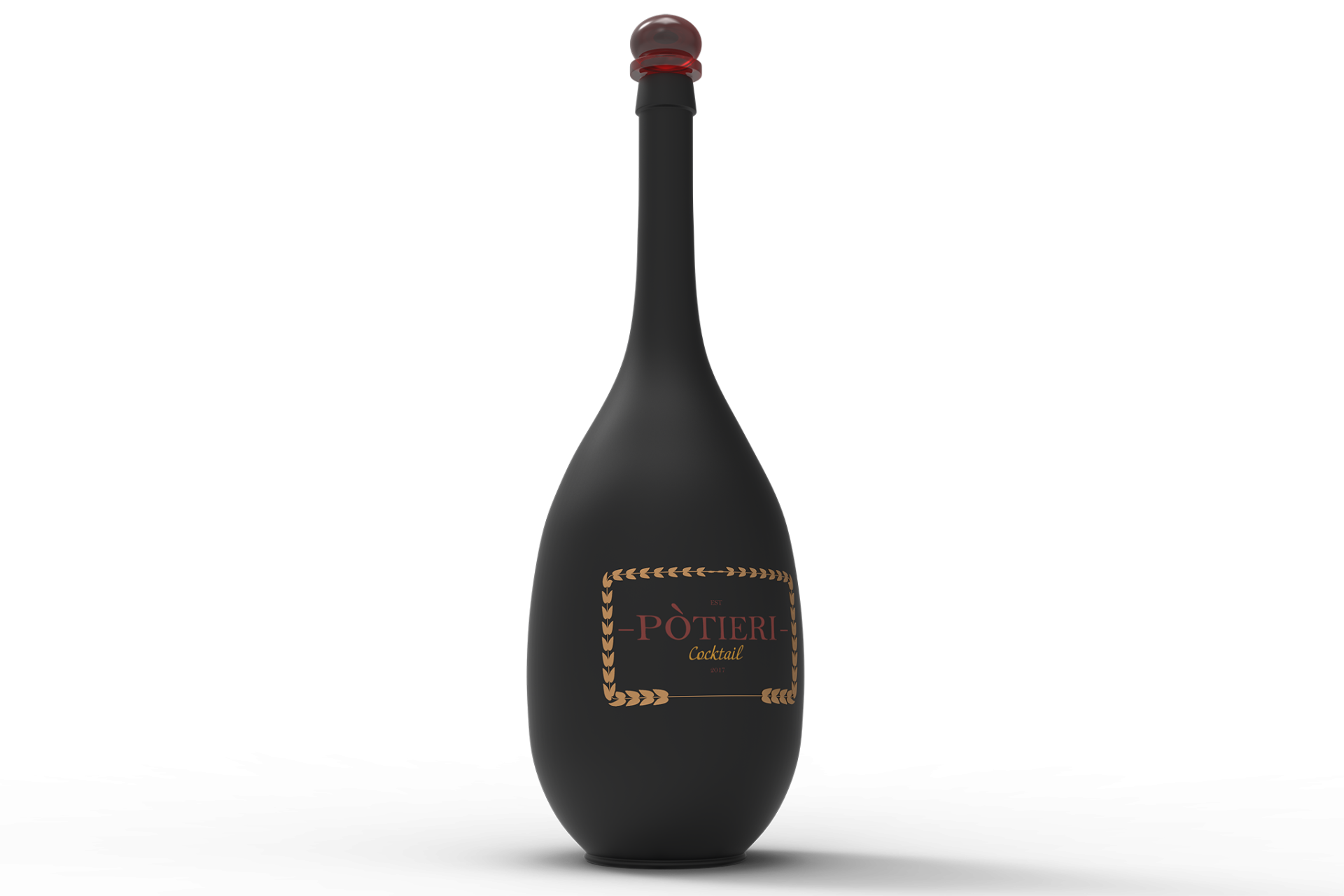
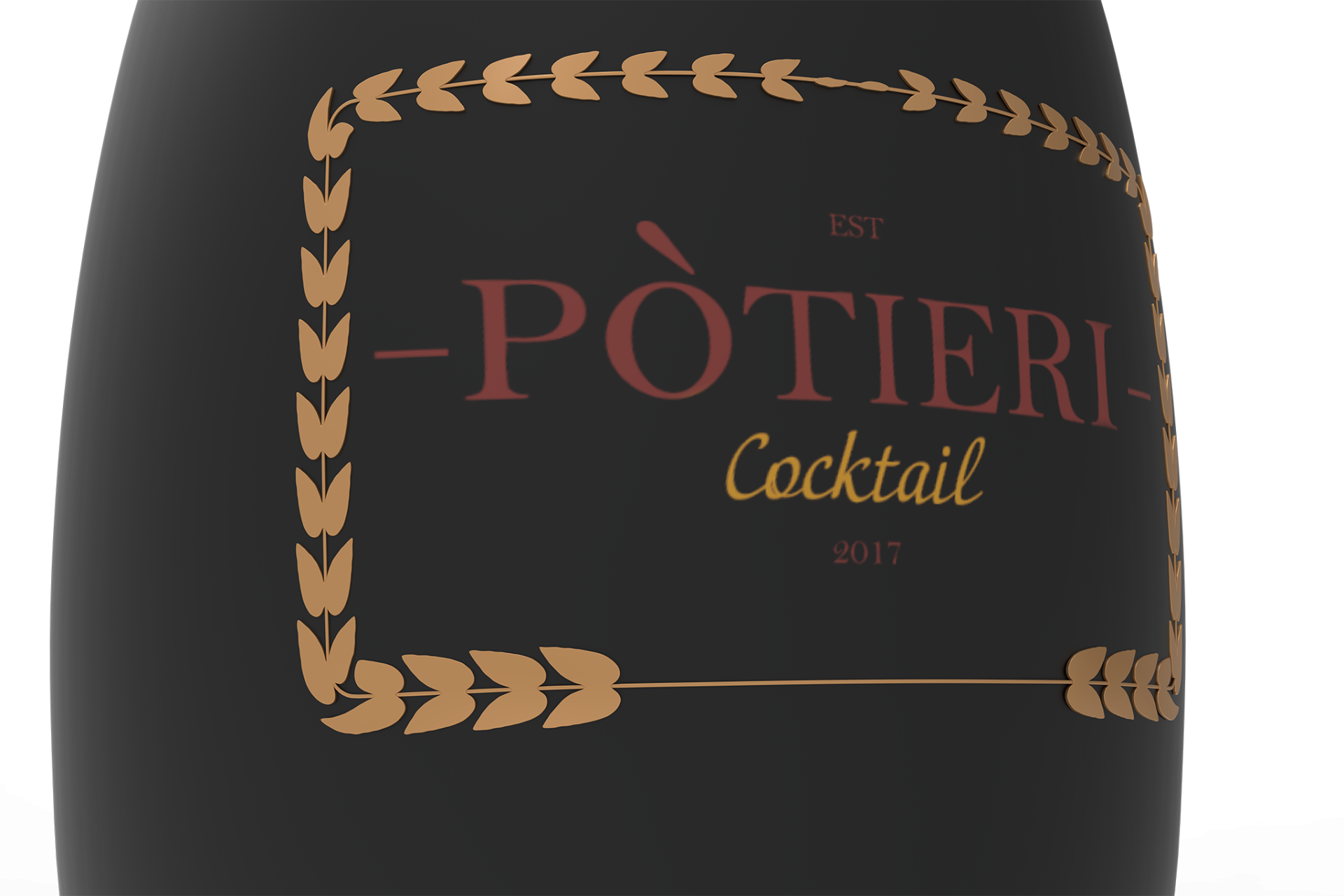
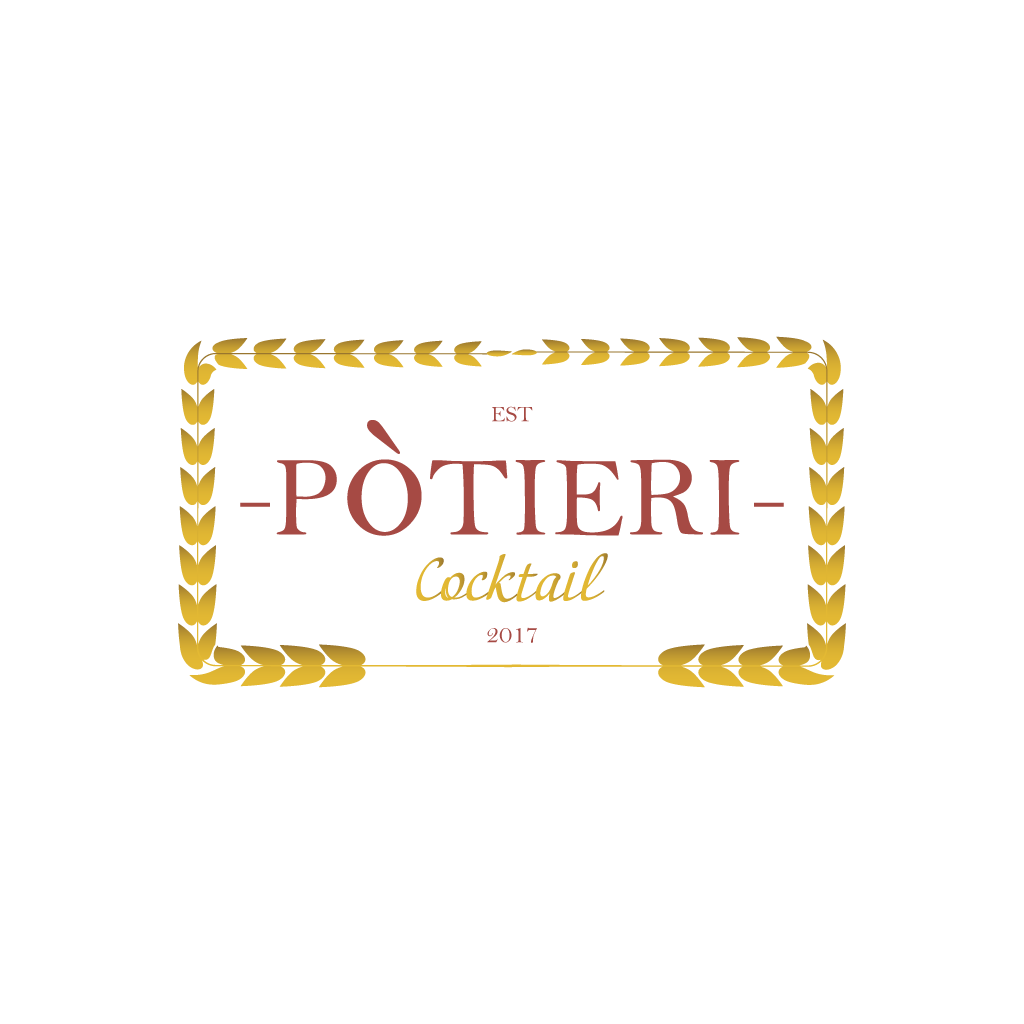
Wine Bottle Prototype
Client Overview: Potieri — a luxury wine brand — approached us with a request to design a custom wine bottle and establish a comprehensive brand identity for their business. The goal was to create a unique and visually appealing bottle that could be sent to a manufacturer for production. Additionally, the client required the creation of a brand logo and the overall branding for their business and bottle cap.
Project Objectives:
- Design a custom wine bottle that stands out and aligns with the client’s brand identity.
- Develop a dynamic scale of the bottle to facilitate accurate manufacturing.
- Establish a comprehensive brand identity, including the creation of a brand logo for the business and the bottle cap.
Approach: We began the project by conducting a thorough analysis of the client’s brand, target audience, and design preferences. This initial research phase was crucial to ensure that the final product and brand identity aligned with the client’s vision and market positioning.
Design and Branding:
- Concept Development: Collaborated with the client to brainstorm and develop initial design concepts for the wine bottle and the brand identity. This involved sketching various bottle shapes, sizes, and features, as well as creating initial logo concepts that reflected the brand’s essence and values.
- 3D Modeling: Utilized Autodesk Maya to create a detailed 3D model of the wine bottle. The model included specific dimensions and features, such as the neck, body, and base of the bottle, as well as the design elements for the bottle cap.
- Dynamic Scale Creation: Developed a dynamic scale of the bottle to ensure accurate replication during manufacturing. This scale accounted for various factors such as volume capacity, material thickness, and structural integrity.
Brand Identity and Logo Design:
- Logo Conceptualization: Worked closely with the client to understand their brand identity and preferences. Based on this input, we created several logo concepts that reflected the brand’s essence and values.
- Logo Finalization: Refined the chosen logo concept and integrated it into the wine bottle design. This included placing the logo on the bottle label and incorporating it into the design of the bottle cap.
- Overall Branding: Developed a cohesive brand identity that included the logo, color schemes, typography, and visual elements. This comprehensive branding approach ensured consistency across all brand touchpoints, from the bottle design to marketing materials.
Texturing and Rendering:
- Texturing: Applied realistic textures to the 3D model using Adobe Photoshop. The textures included materials for the bottle surface, label, and bottle cap, ensuring a high level of detail and realism.
- Rendering: Imported the 3D model into Unreal Engine for final rendering. The rendering process provided photorealistic visuals that allowed the client to see the bottle design and branding in a real-life context.
Challenges and Solutions:
- Balancing Aesthetics and Functionality: Ensuring that the bottle design was both visually appealing and functional for manufacturing posed a challenge. We achieved this balance by iterating on the design and incorporating client feedback throughout the process.
- Cohesive Brand Identity: Creating a cohesive brand identity that seamlessly integrated the logo and visual elements required careful consideration. We experimented with various placements, sizes, and design elements to ensure the brand identity enhanced the overall product design without overpowering it.
Outcome: The final product prototype and brand identity exceeded the client’s expectations. The custom wine bottle design was unique, visually appealing, and ready for manufacturing. The dynamic scale provided clear guidelines for production, and the comprehensive brand identity effectively captured the essence of the client’s business. When they were ready to launch their brand across the nightclub scene, Potieri reached back out to us to create their custom serving platform. You can read about that project in our case study on the custom serving platform. The client was thrilled with the final design and confident in its market appeal.
Software Used:
- Autodesk Maya: For detailed 3D modeling and dynamic scale creation.
- Unreal Engine: For rendering and creating photorealistic visuals.
- Adobe Photoshop: For texturing and brand identity design.
